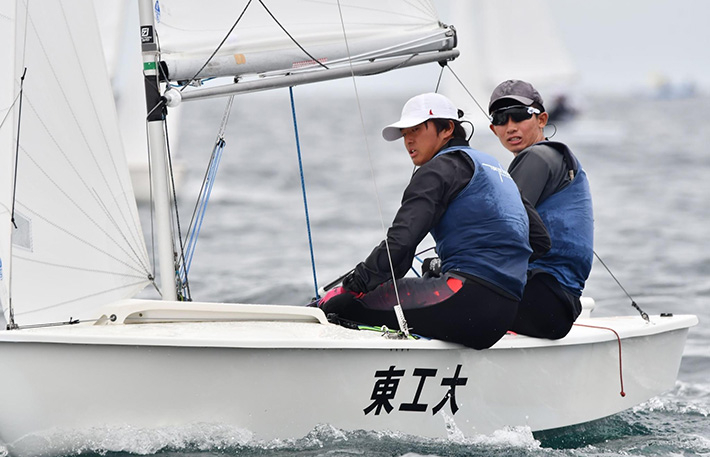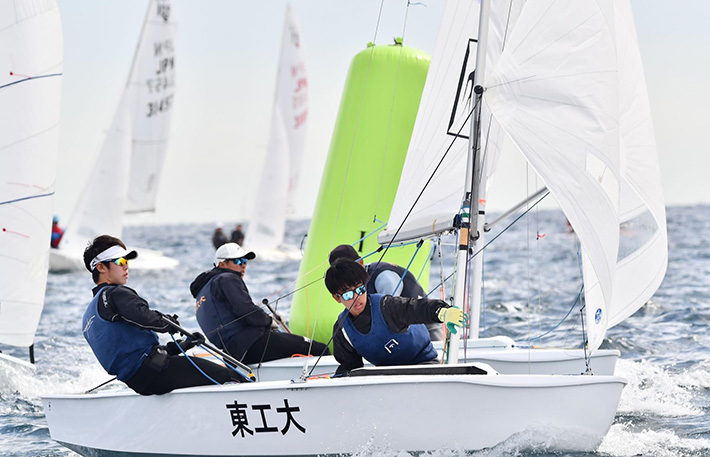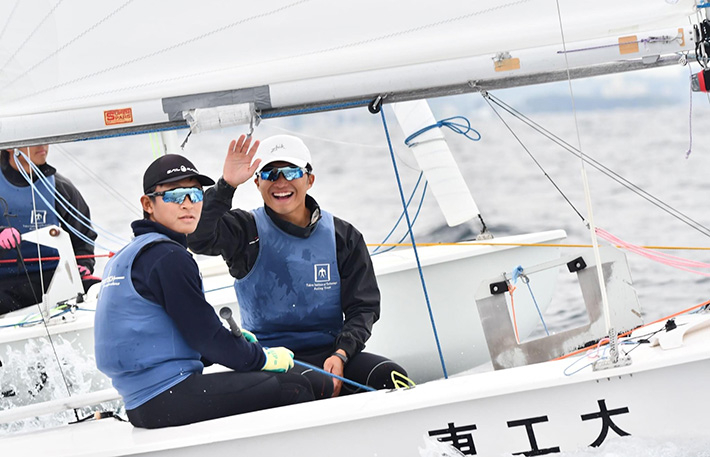The Tokyo Tech Sailing Team finished seventh out of fifteen teams in the Snipe[1] class of the 89th Kanto Intercollegiate Student Sailing Competition final, held on August 8 to 10.
This means the team has qualified for the 87th All Japan Intercollegiate Sailing Championships, which will take place from November 2 to 6 at Lake Biwa, Shiga Prefecture.
Comments from participants
Tokyo Tech Sailing Team captain
Ryo Nishioka
4th year, Chemical Science and Engineering
When I was a first-year student, I had a vague idea that I wanted to compete in the All Japan Intercollegiate Sailing Championships. The following year, I saw my seniors achieve a brilliant fourth-place finish at that competition. In my third year at Tokyo Tech, I embraced the challenge and became a regular race participant, but I quickly realized how much effort was required. We didn't even come close to making the all-Japan competition. After becoming captain, it has been tough to balance my practice and studies while aiming to compete in the All Japan Intercollegiate Sailing Championships, but I have tried my best. I think I have practiced with a greater sense of purpose than ever before. With the support and encouragement of many people, we were able to achieve our goal of competing in this upcoming competition. I would like to thank all those people who supported me. I will do my best to live up to your expectations.
Snipe class team leader
Shogo Makita
4th year, Industrial Engineering and Economics
I am very pleased to have achieved our goal of participating in the All Japan Intercollegiate Sailing Championships. This is the result of the relentless efforts of all the team members in our daily practice sessions. I would like to express my gratitude to Tokyo Tech, the sailing team alumni, and all those who have supported the activities of the team. We will continue to work together at the All Japan Intercollegiate Sailing Championships, and we look forward to your support. I look forward to demonstrating my abilities at this competition and working even harder in my future research activities.

Nishioka (left) and Makita pair
Snipe class skipper
Ryoga Iwakura
4th year, Mechanical Engineering
I am very pleased to have achieved success in the Kanto regional finals, and to get a chance to join the All Japan Intercollegiate Sailing Championships, a real pinnacle in Japanese university sports. There were times when our team's activities were in jeopardy due to COVID-19. However, this achievement is the result of our tireless efforts and the support we received from various people. We never gave up on our goals.
I have been lucky enough to lead a hard but worthwhile student life, spending my weekdays studying and conducting research, and sailing on my days off. I will never forget this feeling of gratitude towards those who have supported me. I will do my very best to finish on the podium at the All Japan Intercollegiate Sailing Championships.

Iwakura (left) and Syunsuke Michisita, 4th-year student in Chemical Science and Engineering

3rd-year Mechanical Engineering student Taiki Ikeda (left) with 4th-year Mechanical Engineering student Ryuya Hanazaki
The Snipe is a 4.72-meter sailboat designed by William F. Crosby in 1931. It was originally intended as a boat that can be rigged and launched in a short time, and has maintained its position as one of the most popular two-person racing sailboats since its creation. The Snipe gets its name from the species of long-beaked bird.






